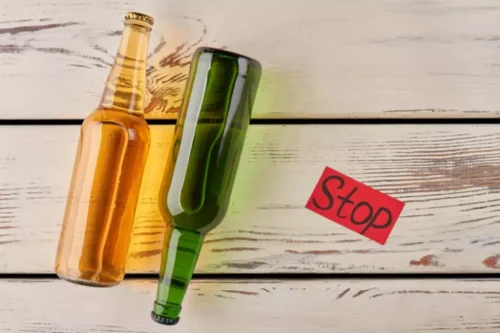Is Moderate Drinking Possible for People With Alcohol Use Disorder?

Your sobriety journey is personal, and what works best for you may not work as well for someone else. However, studies have shown that abstinence often yields more benefits in the long run. For instance, abstaining from alcohol controlled drinking vs abstinence can decrease the risk of liver disease, improve cognitive function, and enhance emotional resilience. You’re here because you’ve taken the first brave step in acknowledging that your relationship with alcohol needs a change.
- In contrast to the holistic approach of harm reduction psychotherapy, risk reduction interventions are generally designed to target specific HIV risk behaviors (e.g., injection or sexual risk behaviors) without directly addressing mechanisms of SUD, and thus are quite limited in scope.
- A key aspect of abstinence is understanding and navigating through the withdrawal process – a daunting task indeed but necessary for recovery.
- Those clients described meetings as helpful at the beginning of their recovery process.
- But other research indicates that the pool of those who achieve remission can be expanded by having broader treatment goals.
Quality of evidence evaluation
Furthermore, noprior study has considered length of time in recovery when comparing QOL betweenabstinent and non-abstinent individuals. The current aims are to identify correlates ofnon-abstinent recovery and examine differences in QOL between abstainers andnon-abstainers accounting for length of time in recovery. Some studies have failed to confirm the link between controlled-drinking versus abstinence outcomes and alcoholic severity.
1. Review aims
In three Swedish projects, on recovery from SUD, 56 clients treated in 12-step programmes were interviewed approximately six months after treatment (Skogens and von Greiff, 2014, 2016; von Greiff and Skogens, 2014, 2017; Skogens et al., 2017). Clients were recruited via treatment units (outpatient and inpatient) in seven Swedish city areas. Inclusion criteria were drawn up to recruit interviewees able to reflect on their process of change. Therefore, the client should be at the end of or have recently completed post-treatment intervention and be judged by a professional to be in a positive change process regarding their SUD.
What are legitimate nonabstinent outcomes for alcoholism?

I can’t even think of how many times I’ve heard the notion that complete, total, abstinence should be the only goal for all people who abuse drug or alcohol. This idea is so pervasive that most addiction treatment providers actually expel clients for relapsing, a notion that makes no sense to me especially if you believe in the idea that addiction is a chronic disease. In fact, even most research institutions and well-informed providers use total abstinence as the marker for addiction treatment success. https://ecosoberhouse.com/ Potential correlates of non-abstinent recovery, such as demographics andtreatment history, were based on NESARC results. Additionally, the survey asked about current quality oflife using a 4-point scale as administered by the World Health Organization (The WHOQOL Group 1998). Goodwin, Crane, & Guze (1971) found that controlled-drinking remission was four times as frequent as abstinence after eight years for untreated alcoholic felons who had “unequivocal histories of alcoholism” (see Table 1).
- Her counselor agreed that abstinence was a good solution and they took steps to help Reagan achieve this goal.
- The study was especially notable because most other treatment readiness measures have been validated on treatment-seeking samples (see Freyer et al., 2004).
- We reported estimated odd ratios with 95% confidence intervals comparing each intervention with placebo or with treatment as usual depending on the network structure.
- In the initial interviews, all the clients declared themselves abstinent and stressed that substance use in any form was not an option.
- Some clients expressed a need for other or complementary support from professionals, whereas others highlighted the importance of leaving the 12-step community to be able to work on other parts of their lives.
They’re able to enjoy an occasional drink while still avoiding negative drinking behaviors and consequences. In other studies of private treatment, Walsh et al. (1991) found that only 23 percent of alcohol-abusing workers reported abstaining throughout a 2-year follow-up, although the figure was 37 percent for those assigned to a hospital program. According to Finney and Moos (1991), 37 percent of patients reported they were abstinent at all follow-up years 4 through 10 after treatment. Clearly, most research agrees that most alcoholism patients drink at some point following treatment.

The RP model has been studied among individuals with both AUD and DUD (especially Cocaine Use Disorder, e.g., Carroll, Rounsaville, & Gawin, 1991); with the largest effect sizes identified in the treatment of AUD (Irvin, Bowers, Dunn, & Wang, 1999). As a newer iteration of RP, Mindfulness-Based Relapse Prevention (MBRP) has a less extensive research base, though it has been tested in samples with a range of SUDs (e.g., Bowen et al., 2009; Bowen et al., 2014; Witkiewitz et al., 2014). There is less research examining the extent to which moderation/controlled use goals are feasible for individuals with DUDs. The most recent national survey assessing rates of illicit drug use and SUDs found that among individuals who report illicit drug use in the past year, approximately 15% meet criteria for one or more DUD (SAMHSA, 2019a). About 10% of individuals who report cannabis use in the past year meet criteria for a cannabis use disorder, while this proportion increases to 18%, 19%, 58%, and 65% of those with past year use of cocaine, opioids (misuse), methamphetamine, and heroin, respectively. These data suggest that non-disordered drug use is possible, even for a substantial portion of individuals who use drugs such as heroin (about 45%).
Models of nonabstinence psychosocial treatment for SUD
All the interviewed clients reported a successful treatment outcome, i.e. total abstinence six months after treatment. The aim is to investigate how these clients view abstinence and the role of AA[1] in their recovery process during the past five years. There are heterogeneous views on the possibilities of CD after recovery from substance use disorder both in research and in treatment systems. This study on client views on abstinence versus CD after treatment advocating total abstinence can contribute with perspectives on this ongoing discussion.





 お問い合わせ
お問い合わせ